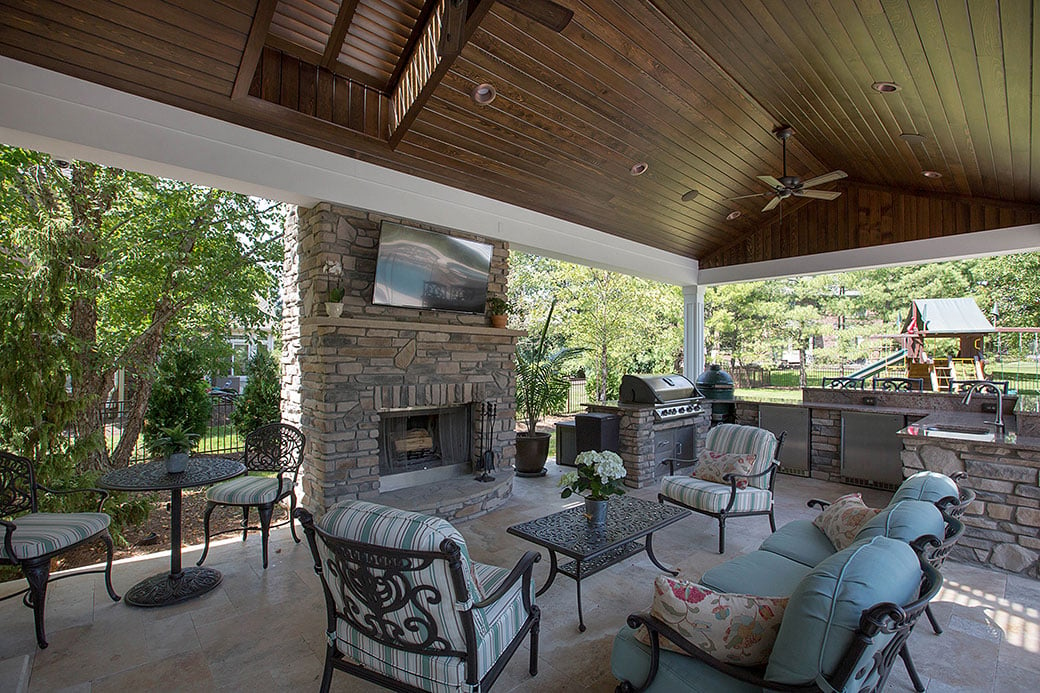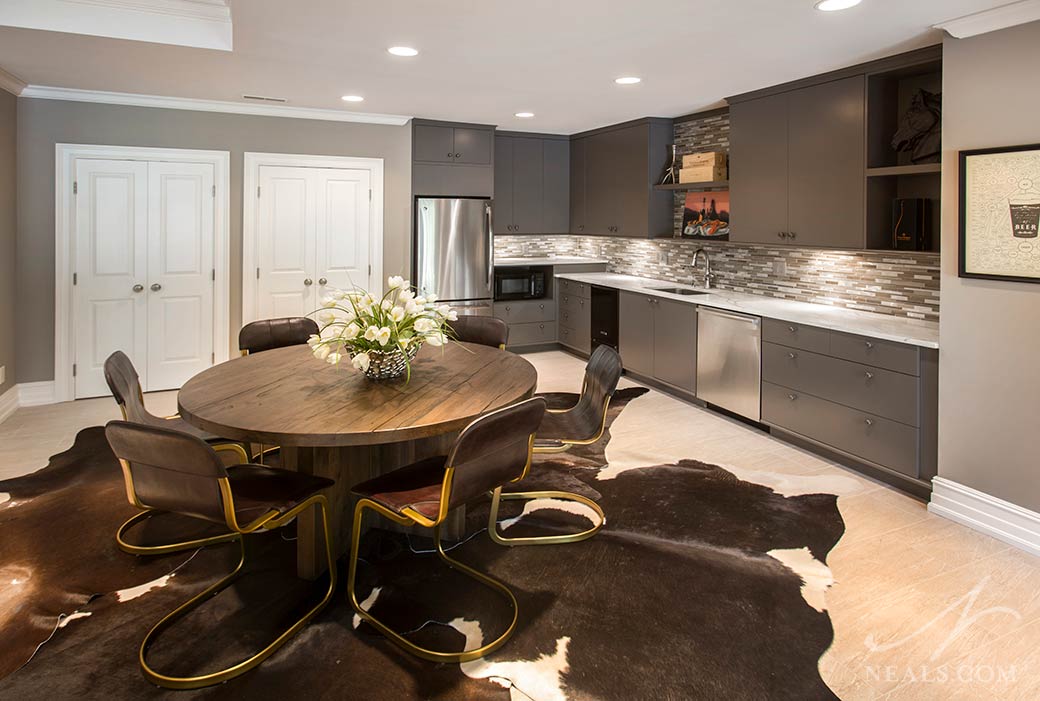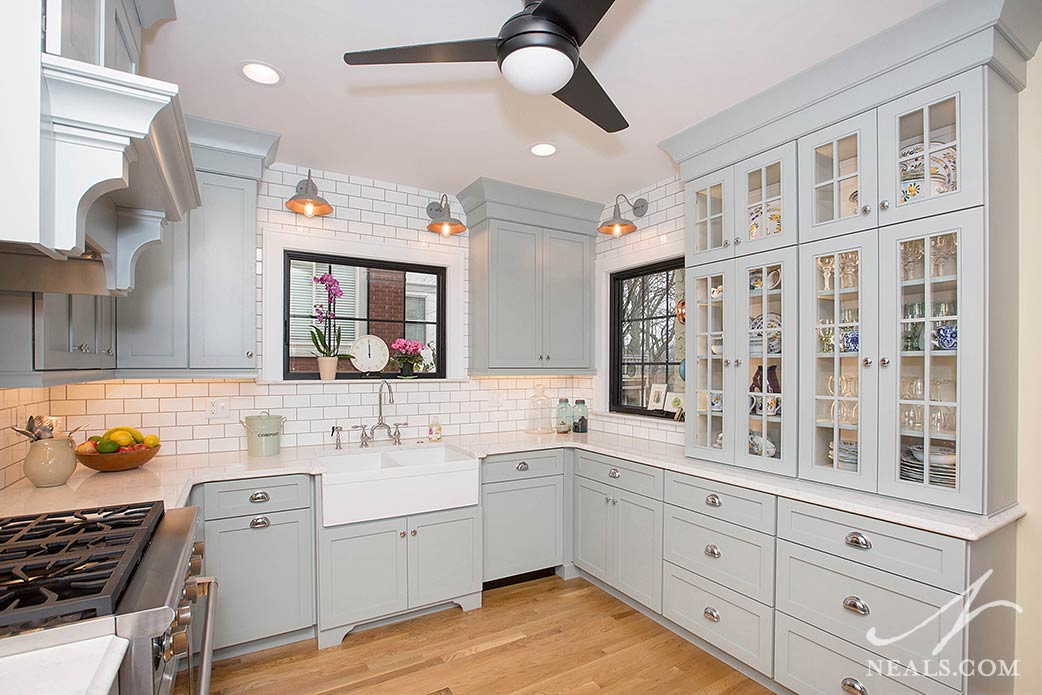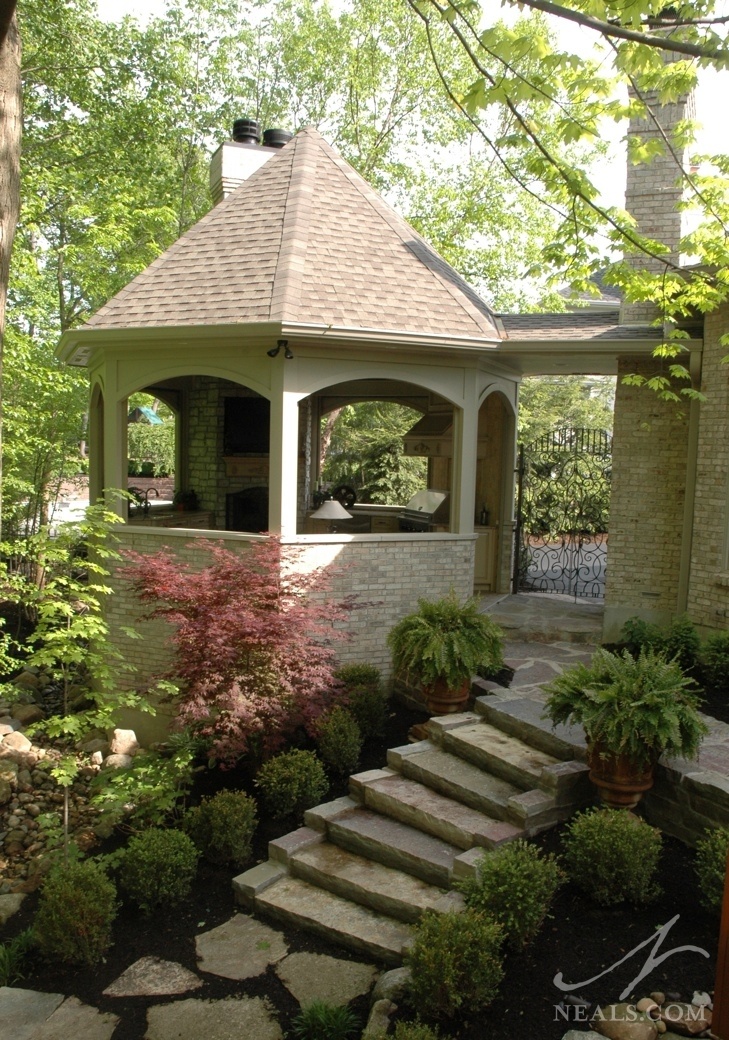This outdoor living remodeling project included the reworking of an existing open-air structure, as well as the design of a new pool and accompanying deck that transformed the backyard just behind the home. The new structure extends further out, providing space for a new outdoor kitchen and ample space for a seating area around a new fireplace.
Read MoreNeal's Home Remodeling and Design Blog
Project Tour: English Garden Style Outdoor Living in Montgomery
Posted by Neal R. Hendy on Tue, Jul 7, 2020
Topics: Outdoor Living
7 Design Considerations for Basement Kitchens
Posted by Laura Webster on Mon, Jun 29, 2020
Have you ever wished for a second kitchen to store items you use for entertaining along with extra appliances and a sink for preparing food? If you’re planning a basement remodel, you may find the extra space you need. When designing a lower level living space, think of a basement kitchen, kitchenette or bar area the same way you would if you were remodeling the primary kitchen of a home. Here are seven design considerations for creating an attractive and functional second kitchen in your home.
Read MoreTopics: Lower Level, Kitchens, Lighting, Countertops
Adding Farmhouse Style to Your Home
Posted by Amanda Morehart on Mon, Jun 22, 2020
The term "farmhouse style" is a loose phrase that encompasses a collection of design principles rather than a strict list of must-haves. A handful of distinctive styles fall under the umbrella of "farmhouse", so it's easy to either follow one of those styles specifically or to grab components of several and still have your project result in a cohesive farmhouse style space. Keep reading for a look at some of the key style points behind a successful farmhouse look in your own home.
Read MoreTopics: Kitchens
10 Hardscape Design Ideas for Gardens
Posted by Alan Hendy on Mon, Jun 15, 2020
Though gardens are primarily composed of plants, they can be enhanced with additional features like pathways, retaining wall or structures. Non-plant landscaping elements are referred to as hardscaping, since most of these features are composed of hard materials such as stone or concrete. Hardscaping serves as a framework around which gardens can be arranged, separating planting areas, offering connections between different garden plots, or helping to pull an all-over yard landscape together. Though a hardscape isn't necessary for a beautiful garden, it may be worth considering. See how different hardscape design ideas were used in our outdoor living projects to inspire using the additional elements in your landscape to help your yard feel more put together and usable.
Topics: Outdoor Living, Design Trends and Ideas














